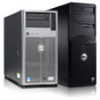Dell PowerEdge XL 5133-4 MXL 10/40GbE Switch IO Module FTOS Command Reference - Page 50
File System Management, show file-systems Command Example, Command Syntax, Command Mode
 |
View all Dell PowerEdge XL 5133-4 manuals
Add to My Manuals
Save this manual to your list of manuals |
Page 50 highlights
www.dell.com | support.dell.com File System Management The Dell Force10 system can use the internal Flash, USB Flash, or remote devices to store files. The system stores files on the internal Flash by default, but you can configure it to store files elsewhere. To view file system information: Task View information about each file system. Command Syntax show file-systems Command Mode EXEC Privilege The output of the show file-systems command (Figure 4-13) shows the total capacity, amount of free memory, file structure, media type, and read/write privileges for each storage device in use. Figure 4-13. show file-systems Command Example FTOS#show file-systems Size(b) 2143281152 FTOS# Free(b) 836878336 - Feature Type FAT32 USERFLASH - network - network - network Flags rw rw rw rw Prefixes flash: ftp: tftp: scp: You can change the default file system so that file management commands apply to a particular device or memory. To change the default storage location: Task Change the default directory. Command Syntax cd directory Command Mode EXEC Privilege You can change the default storage location to the USB Flash (Figure 4-14). File management commands then apply to the USB Flash rather than the internal Flash. 36 | Getting Started















